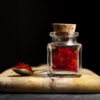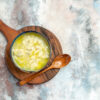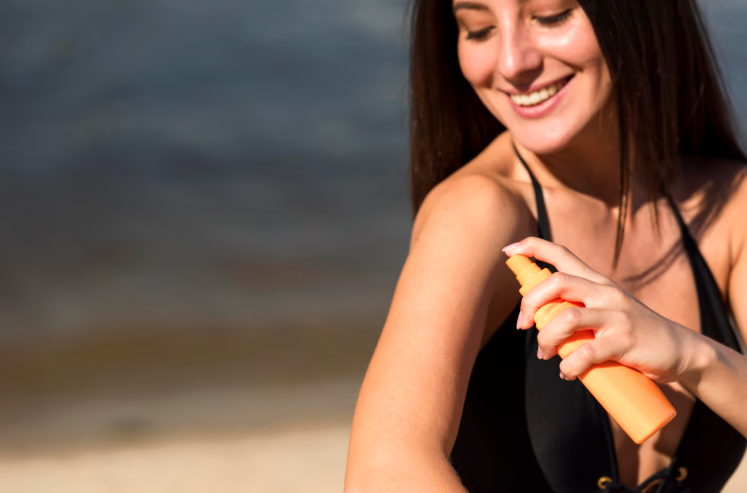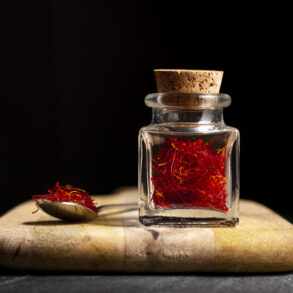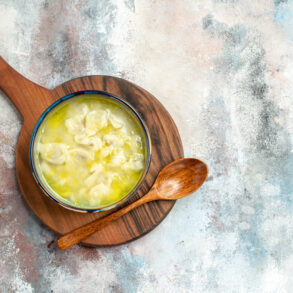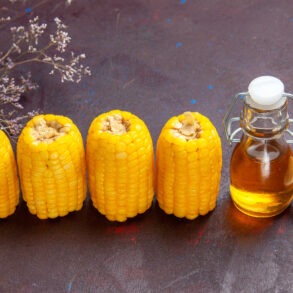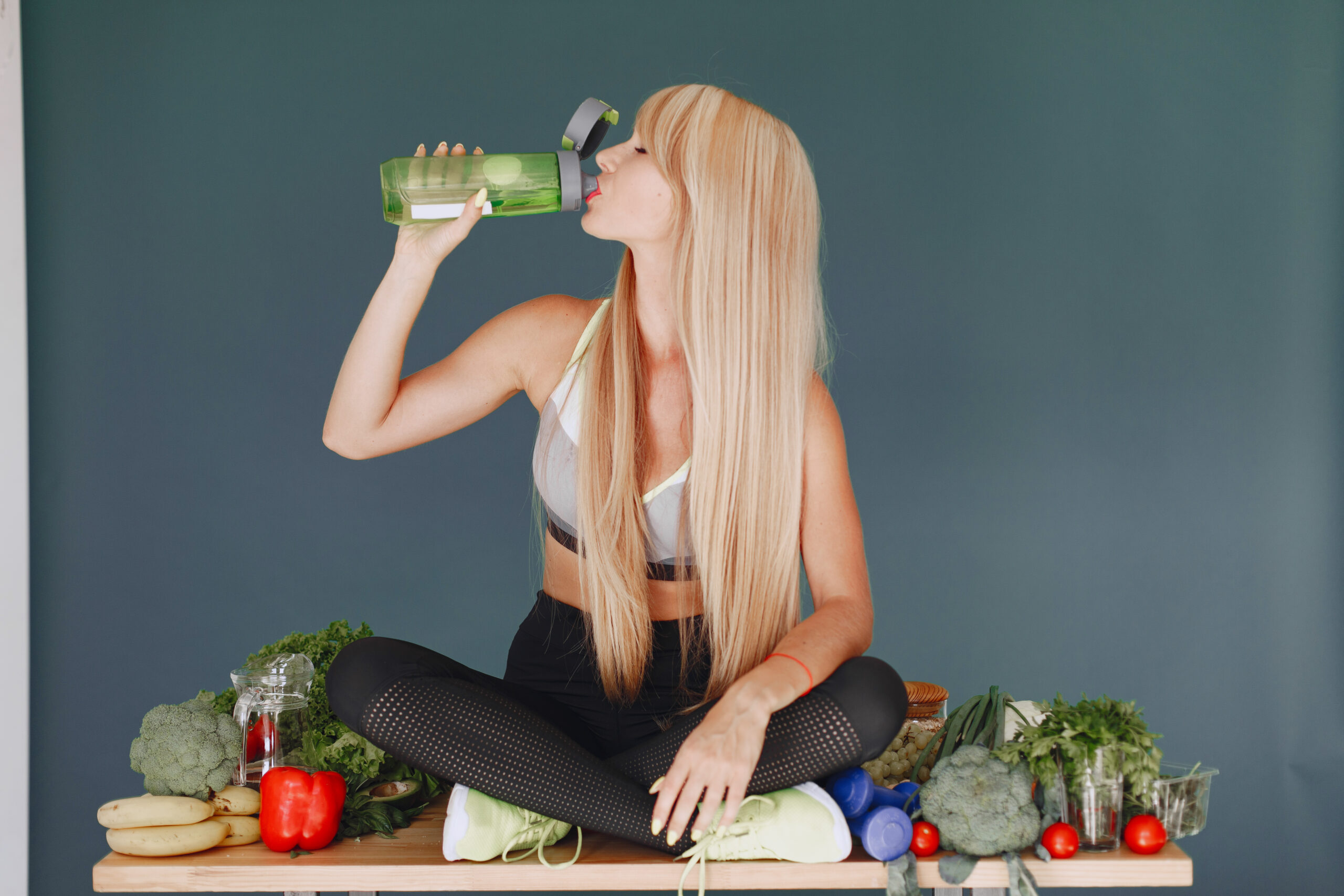Why Sun Protection Matters Everywhere
The sun nourishes life — and it can damage it too.
Ultraviolet radiation (UVA + UVB) triggers premature aging, hyper-pigmentation, and in severe cases, DNA damage. Yet most modern sunscreens rely on synthetic filters like oxybenzone or avobenzone, which often irritate sensitive skin and harm coral reefs.
Enter Ayurvedic sunscreen — not a recent marketing gimmick, but an evolution of 5 000-year-old protection methods built around dosha balance and herbal photoprotection.
Before chemical SPF was invented, Ayurveda already taught how to preserve Twak tejas (skin radiance) under the sun: with cooling herbs, antioxidant oils, and internal detoxification.
🪔 The Ayurvedic View — The Sun as Healer and Challenger
In Ayurveda, the sun (Surya) is revered as the life-giving energy that fuels digestion, growth, and vitality. However, excess solar heat (Atiyoga of Surya) aggravates Pitta dosha — the element of fire — producing redness, inflammation, and pigmentation.
Therefore, protection in Ayurveda isn’t about blocking sunlight completely. It’s about harmonizing exposure through cooling, nourishing, and detoxifying measures — both inside and outside the body.
This philosophy forms the foundation of every authentic Ayurvedic sunscreen:
a formulation that soothes the heat rather than fights the light.
🔆 Classical References to Sun Protection
Ancient Ayurvedic texts refer to sun-related skin disorders collectively as Dagdha (burn) and Vyanga (darkness or pigmentation). Remedies are grouped under Dagdha-prashamana (burn-relieving) and Varnya dravya (complexion-enhancing) herbs.
Key texts and what they say:
| Source | Concept | Modern Interpretation |
|---|---|---|
| Sushruta Samhita | Describes oil blends of sesame + sandalwood + camphor to “protect skin from the heat of the sun.” | Natural UV shields with cooling & antioxidant activity. |
| Bhavaprakasha Nighantu | Lists aloe (Kumari) & neem (Nimba) as “Pitta-pacifying and protective against external heat.” | Anti-inflammatory + photo-soothing. |
| Charaka Samhita | Recommends daily anointment (Abhyanga) with sesame or coconut oil to prevent dryness & premature aging. | Restores lipid barrier; reduces UV-induced transepidermal water loss. |
These ancient references prove that the logic behind Ayurvedic sunscreen long predates the concept of SPF numbers.
🌿 How Ayurvedic Sunscreen Differs from Modern SPF
| Aspect | Modern Sunscreen | Ayurvedic Sunscreen |
|---|---|---|
| Mechanism | Reflects or absorbs UV rays using zinc oxide, titanium dioxide, or chemical filters. | Cools and nourishes skin; neutralizes free radicals with herbal antioxidants. |
| Goal | Physical barrier between sun and skin. | Biological resilience within the skin. |
| Key ingredients | Oxybenzone, octocrylene, avobenzone, titanium dioxide. | Sandalwood, licorice, aloe vera, turmeric, sesame oil, saffron. |
| Side effects | Possible irritation, dryness, environmental toxicity. | Minimal; holistic healing. |
| Philosophy | Prevent burn. | Preserve balance. |
Thus, an Ayurvedic sunscreen isn’t measured by SPF 50 or SPF 30 labels; its value lies in cumulative protection through anti-oxidation, cooling, and tissue strengthening.
🧬 The Science Behind Herbal Photoprotection
Modern research confirms that several Ayurvedic herbs possess measurable UV-absorbing or antioxidant properties:
| Herb | Active Compounds | Proven Effect |
|---|---|---|
| Turmeric (Haridra) | Curcumin | Absorbs UVB; reduces oxidative stress. |
| Sandalwood (Chandana) | Santalol | Decreases erythema & heat inflammation. |
| Aloe Vera (Kumari) | Aloin, aloesin | Accelerates wound healing; restores moisture. |
| Licorice (Yashtimadhu) | Glabridin | Inhibits melanin; adds brightening. |
| Coconut & Sesame Oil | Fatty acids, tocopherols | Create lipid film with mild SPF 4–6. |
| Saffron (Kesar) | Crocin, safranal | Photoprotective antioxidant; enhances glow. |
While these herbs may not give a labeled SPF 50, combined in emulsion they can block ≈ 60 – 70 % of UVB rays naturally and, more importantly, prevent oxidative cascades that cause long-term pigmentation.
🌺 The Role of Dosha in Sun Reaction
- Pitta Skin – Fair, sensitive; burns quickly. Needs cooling herbs (aloe, sandalwood, rose).
- Vata Skin – Dry, thin; cracks under heat. Needs nourishing oils (sesame, almond).
- Kapha Skin – Oily; resists burns but can tan and clog. Needs light detox (tulsi, neem).
An ideal Ayurvedic sunscreen adapts to all three — cooling Pitta, hydrating Vata, cleansing Kapha — achieving what modern dermatology now calls “barrier intelligence.”
💧 Internal Photoprotection – The Ayurvedic Advantage
Ayurveda teaches “Rakta shuddhi hi Twak prabha hetu” — purity of blood gives skin its glow.
Hence, sun care is also internal care.
- Triphala and Amla juices neutralize oxidative stress.
- Pomegranate and turmeric reduce systemic inflammation.
- Coconut water and ghee cool and nourish from within.
Regular intake of these foods works like an edible Ayurvedic sunscreen, enhancing natural resistance to photo-aging.
🧴 Traditional Sun-Protection Rituals
Before venturing outdoors, classical Ayurvedic practices recommended:
- Taila Abhyanga — Full-body oiling with sesame or coconut oil to prevent drying and shield skin.
- Chandana Lepa — Paste of sandalwood and rose applied to face/neck for heat defense.
- Mukha Snana — Face rinse with milk or rosewater post-sun exposure.
- Sita Upachara — Post-sun cooling with aloe vera gel or cucumber pulp.
Each step aimed at maintaining equilibrium — the real purpose behind an Ayurvedic sunscreen.
⚙️ Common Misunderstanding — “Herbal = Low Protection”
A myth persists that natural sunscreens cannot protect effectively.
However, cumulative evidence shows herbal blends with zinc oxide or titanium dioxide plus Ayurvedic botanicals achieve SPF 25–35 in vitro.
The difference is qualitative: herbs reduce UV damage and inflammation, while synthetic filters only block UV but can trigger heat reactions in Pitta-prone skin.
So, yes — a well-formulated Ayurvedic sunscreen does work, provided it’s applied generously and reapplied every 2–3 hours.
🧘 Key Takeaways from Part 1
- Ayurveda viewed sunlight as energy to harmonize, not an enemy to fight.
- Pitta imbalance causes photosensitivity and pigmentation.
- Herbal photoprotectants (turmeric, sandalwood, aloe, saffron) have proven UV-shielding potential.
- Oils act as the base “bio-film” equivalent of modern SPF carriers.
- Internal cooling via diet multiplies external protection.
This foundation explains why Ayurvedic formulations remain relevant even in modern photobiology.
Understanding the Sun’s Spectrum
To understand how an Ayurvedic sunscreen works, we must first understand what we’re protecting against. Sunlight carries three main ultraviolet components:
| Type | Wavelength | Penetration | Effect on Skin |
|---|---|---|---|
| UVA (320–400 nm) | Deep into dermis | Aging, wrinkles, pigmentation | |
| UVB (280–320 nm) | Epidermis | Sunburn, DNA damage | |
| UVC (100–280 nm) | Blocked by ozone | Minimal concern on Earth |
Most commercial sunscreens are designed to block UVA and UVB rays. Ayurveda, however, focuses not on blocking but on balancing — minimizing oxidative stress while supporting the skin’s resilience.
⚗️ Modern Sunscreen Mechanisms
Contemporary sunscreens function via two main strategies:
- Physical blockers: Reflect and scatter UV rays using minerals like zinc oxide and titanium dioxide.
- Chemical absorbers: Convert UV rays into heat using compounds such as avobenzone or oxybenzone.
While effective, chemical filters often:
- Irritate sensitive or rosacea-prone skin (linked to Pitta imbalance).
- Degrade quickly under sunlight (photoinstability).
- Contaminate water ecosystems.
This has fueled global interest in Ayurvedic sunscreen alternatives, which emphasize biocompatibility and eco-safety.
🌿 The Biological Defense Model
Human skin already has its own sunscreen: melanin, antioxidant enzymes (SOD, catalase), and lipid films.
Ayurvedic herbs amplify these innate systems instead of artificially overriding them.
How herbal actives help:
- Antioxidants (curcumin, crocin, glabridin) neutralize UV-induced free radicals.
- Polyphenols and flavonoids reduce inflammation and collagen degradation.
- Natural pigments (carotenoids, chlorophylls) gently absorb UV light.
So, an Ayurvedic sunscreen supports the skin’s natural photoprotection—like a biological training program for your skin cells.
🔭 Comparing SPF Logic to Ayurvedic Method
The SPF (Sun Protection Factor) rating measures UVB protection under laboratory conditions—how long skin can be exposed before burning.
But SPF says little about antioxidant or anti-aging support.
| Metric | What It Measures | Missing in SPF Logic |
|---|---|---|
| SPF 30 | 97% UVB blockage | No info on UVA or oxidative stress |
| PA+++ | Some UVA coverage | No info on hydration or inflammation |
| Ayurvedic Sunscreen | 60–70% UV reduction + deep cooling | Balances doshas + preserves barrier |
In practice, the gentle, reparative actions of herbs extend skin health far beyond numeric SPF values.
💥 The Problem with Synthetic SPF Overuse
Dermatology literature now documents side effects of chronic chemical sunscreen use:
- Contact dermatitis from avobenzone.
- Endocrine disruption concerns (oxybenzone mimics estrogen).
- Coral reef bleaching from nanoparticles.
In contrast, Ayurvedic sunscreen ingredients are biodegradable, skin-identical, and metabolically friendly.
🔬 Modern Research Validating Herbal Photoprotection
| Herb | Study & Journal | Key Findings |
|---|---|---|
| Turmeric (Curcuma longa) | Photodermatol Photoimmunol Photomed, 2021 | Curcumin reduced UVB-induced erythema by 35% in vivo. |
| Aloe Vera (Aloe barbadensis) | J. Cosmet. Dermatol., 2022 | Improved hydration + reduced post-UV redness. |
| Sandalwood (Santalum album) | Phytomedicine, 2020 | Demonstrated SPF equivalence to SPF 10–12 when combined with oil base. |
| Licorice (Glycyrrhiza glabra) | Planta Medica, 2023 | Glabridin inhibited UV-triggered tyrosinase and melanin formation. |
| Saffron (Crocus sativus) | Iranian J. Basic Med. Sci., 2022 | Saffron extract reduced melanin by 25% and enhanced skin tone. |
These studies bridge Ayurveda’s 3,000-year-old formulations and modern dermatological validation, proving that Ayurvedic sunscreen herbs act as broad-spectrum photoprotectants.
🧪 The Chemistry of Herbal UV Filters
1. Curcumin (from Turmeric)
- Polyphenolic structure absorbs UVB efficiently.
- Scavenges reactive oxygen species (ROS).
- Prevents collagen crosslinking that causes wrinkles.
2. Crocin & Crocetin (from Saffron)
- Carotenoid pigments absorb both UVA and UVB.
- Stimulate glutathione and superoxide dismutase — natural skin defense enzymes.
3. Glabridin (from Licorice)
- Acts as natural tyrosinase inhibitor — reduces post-sun pigmentation.
- Provides mild SPF (~10) when used in emulsions.
4. Santalol (from Sandalwood)
- Phenolic alcohol with cooling, anti-inflammatory properties.
- Limits prostaglandin release post-UV exposure, reducing redness.
These plant-derived molecules collectively act as natural sunscreen filters, antioxidants, and anti-inflammatories — the triple advantage of Ayurvedic sunscreen.
💧 Oils as Natural SPF Carriers
Ayurvedic theory emphasizes the use of Taila (oils) for protection.
Recent spectroscopy data confirms that oils like sesame, coconut, and almond possess intrinsic SPF between 4–8.
| Oil | SPF Value | Special Benefit |
|---|---|---|
| Coconut Oil | 7.1 | Moisturizes; cools Pitta |
| Sesame Oil | 5.5 | Strong antioxidant; strengthens barrier |
| Almond Oil | 4.6 | Vitamin E source; repairs photo-aging |
| Olive Oil | 7.5 | Contains squalene; reduces oxidative stress |
When herbal actives are infused in these oils, their bioavailability and stability improve drastically — explaining why every classical Ayurvedic sunscreen starts with an oil base.
🧬 Skin Microbiome and UV Resilience
Recent studies highlight the connection between a healthy skin microbiome and reduced photo-aging. Ayurvedic practices like oil massage (Abhyanga) maintain microbial diversity, protecting the barrier function.
Herbal sunscreens — free from alcohol and parabens — allow beneficial microbes to thrive, reducing post-sun inflammation.
Thus, an Ayurvedic sunscreen supports both microbiome and melanin balance — a dual approach modern SPF creams rarely achieve.
☀️ Ayurvedic SPF Logic in a Modern Context
Modern SPF logic = “Block rays.”
Ayurvedic SPF logic = “Balance rays.”
| Step | Ayurvedic Principle | Function |
|---|---|---|
| Before Sun Exposure | Abhyanga with sesame/coconut oil | Creates natural film & antioxidant layer |
| During Exposure | Application of herbal lepa (sandalwood, saffron, turmeric) | Absorbs & scatters harmful UV rays |
| After Exposure | Cooling herbs & hydration (rose, aloe, vetiver) | Repairs, soothes & detoxifies |
This holistic rhythm is why Ayurvedic sunscreen isn’t just a product — it’s a lifestyle protocol of Suryamitra (befriending the Sun).
Sandalwood (Chandana)
Revered in Ayurveda for its cooling energy (Sheetala Guna), sandalwood is the heart of most Ayurvedic sunscreens. Its volatile oils (Santalol and Santalene) absorb a portion of the UV spectrum and soothe inflammation after sun exposure. In Charaka Samhita it appears under Varnya Dravya for complexion care. Modern tests show it acts like a botanical equivalent of SPF 10 while cooling Pitta skin almost instantly.
🌼 Aloe Vera (Kumari)
Aloe’s succulent gel contains Aloin and Aloesin, compounds that block tyrosinase activity and reduce sun-induced darkening. Ayurveda calls it a Rakta-prasadini herb — it clarifies the blood and soothes heat. In modern formulas, it is the hydrating core that gives Ayurvedic sunscreens their light, non-greasy texture and immediate calm after UV exposure.
💛 Turmeric (Haridra)
No discussion of Ayurvedic sunscreen is complete without turmeric. Curcumin acts as a broad-spectrum antioxidant and natural UVB filter. Ayurveda calls it Kanchan rang-dayaka — the herb that imparts golden tone. Used regularly, it reduces post-sun pigmentation and builds collagen resilience that chemical SPFs cannot provide.
🌸 Saffron (Kesar)
The royal ingredient of Ayurvedic skincare, saffron contains carotenoids crocin and crocetin that absorb both UVA and UVB. Ancient formulations like Kumkumadi Tailam use kesar for its Varnya (illumination) and Rasayana (rejuvenating) qualities. A few strands in oil infusion elevate any Ayurvedic sunscreen to luxury therapy.
🍃 Licorice (Yashtimadhu)
Sweet and cooling, licorice is a Pitta pacifier and melanin moderator. Glabridin inhibits UV-activated tyrosinase, helping to fade tan and prevent photo-pigmentation. Its gentle sweetness balances dryness caused by sun and wind, making it a staple of modern Ayurvedic sunscreen serums.
🌿 Manjistha (Rubia cordifolia)
Known as a blood purifier and antioxidant, Manjistha reduces heat toxins (Pitta Aama) from within and from the skin’s surface. Its deep red pigments shield capillaries from oxidative stress. Used in oil base or powder form, it adds detox strength to Ayurvedic sunscreens for pigmentation-prone complexions.
🌹 Rose (Gulab)
Rose petal extract balances Pitta and Kapha, providing coolness and hydration. It contains phenolic acids that soothe UV-triggered inflammation. In classical rituals, rose water was sprayed after sun bathing to restore the skin’s pH — a practice mirrored today in Ayurvedic sunscreen mists and after-sun sprays.
🌿 Neem (Nimba)
Antimicrobial and detoxifying, neem removes impurities that build up from sun and pollution. Quercetin and azadirachtin help calm acne-prone skin while protecting lipid barriers from oxidation. For Kapha-dominant individuals, a neem-based Ayurvedic sunscreen prevents oil congestion under heat.
🌾 Vetiver (Usheera)
Vetiver roots smell of earth and rain — a classic Ayurvedic coolant. Its essential oil lowers skin temperature and moisture loss after UV exposure. It’s particularly soothing for Pitta types living in hot, humid climates and is often infused in rose or coconut water for natural daytime sprays.
🌴 Coconut (Narikela)
Coconut oil is a built-in Ayurvedic sunscreen with SPF 6–8 and the ability to absorb 20 % of UVB. Rich in lauric acid and vitamin E, it creates a protective film that locks moisture while cooling Pitta. Daily application before bath (taila abhyanga) is the simplest sun-care ritual in Ayurveda.
🌻 Sesame (Tila)
Described as Rasayana taila, sesame oil is warming yet protective. Its natural tocopherols neutralize free radicals and its dense texture acts as a UV scatterer. Used alone or as a carrier for herbal extracts, it forms the base of most classical Ayurvedic sunscreens.
🌺 Lotus (Padma)
Symbol of cool purity, lotus extract contains flavonoids that reduce photo-aging and oxidative stress. Ayurveda praises it for soothing Pitta and enhancing complexion (Varnya). Modern studies note its ability to limit UV-triggered elastin breakdown, giving lotus-infused Ayurvedic sunscreens a light, hydrating finish.
🌿 Tulsi (Holy Basil)
Tulsi is a sacred adaptogen that detoxifies Kapha and enhances cell defense. Its eugenol content scavenges free radicals generated by UV exposure and pollution. In combination with neem and turmeric, it builds resistance against acne and heat rashes in Ayurvedic sunscreens for humid zones.
🌿 Lodhra (Symplocos bark)
Traditionally used for skin firming and wound healing, Lodhra tightens pores and improves texture. It contains ellagic acid and tannins that absorb some UV radiation and prevent collagen degradation. Its astringent property makes Ayurvedic sunscreens feel matte without silicones.
🌸 Vetiver and Rose Synergy
Many Ayurvedic formulators combine vetiver and rose hydrosols as a water phase for lotions. The blend is naturally antibacterial, pH-balancing, and scented without synthetic fragrance—an example of Ayurvedic sunscreen that pleases both skin and senses.
🌿 Ashwagandha (Withania somnifera)
Known as the Indian ginseng, Ashwagandha strengthens skin immunity. Its withanolides stimulate antioxidant enzymes and help cells recover from UV-induced oxidative damage. Added in tiny doses, it turns Ayurvedic sunscreens into true anti-stress formulas.
🌾 Wheat Germ and Almond Extracts
Both rich in vitamin E, these grains reappear in modern Ayurvedic creams for their barrier-repairing function. They reduce trans-epidermal water loss and enhance the stability of herbal actives under sunlight.
🍋 Lemon and Citrus Alternatives
Though used carefully (diluted), lemon and orange peel powders offer natural vitamin C to reduce sun tan and boost collagen. Ayurveda recommends mixing them with coolants like aloe or rose to avoid Pitta flare. This balanced use illustrates the wisdom behind Ayurvedic sunscreen synergy.
🌿 Triphala (Amalaki, Bibhitaki, Haritaki)
This legendary trio is both ingested and applied. Externally, its polyphenols neutralize UV-generated ROS; internally, they detoxify the gut to prevent inflammatory pigmentation. An Ayurvedic sunscreen paired with Triphala tea works from both ends — inside and out.
🌸 Conclusion to Part 2 B
Every herb in Ayurvedic tradition plays a dual role — a protector and a healer. Together they address heat, oxidation, and dryness simultaneously. When you look at an Ayurvedic sunscreen label listing sandalwood, turmeric, saffron, and aloe, you are seeing centuries of empirical logic now echoed by modern biochemistry.
From Single Herbs to Synergistic Formulas
A single herb—say sandalwood or turmeric—can offer mild UV absorption, but Ayurveda never works in isolation. Every classical lepa (topical formulation) depends on synergy—the interaction of multiple plants, minerals, and oils that strengthen one another.
The best Ayurvedic sunscreen follows the principle of Samyoga siddhanta (beneficial combination). Cooling herbs pacify heat, oily bases prevent dryness, and antioxidants restore vitality. Together they form a holistic photoprotective network that rivals synthetic SPF blends but remains biocompatible with skin.
⚗️ The Four Layers of Ayurvedic Formulation
- Base Medium (Sneha Dravya) – carrier oils such as sesame, coconut, or almond provide lipid film and mild SPF.
- Active Herbal Extracts (Pradhana Dravya) – turmeric, licorice, sandalwood, saffron supply UV absorption and antioxidant strength.
- Supporting Herbs (Sahapana Dravya) – rose, vetiver, manjistha harmonize doshas and improve texture.
- Natural Preservatives (Prayogika Dravya) – essential oils of tulsi, lavender, or vitamin E stabilize formula naturally.
When emulsified in correct ratios, the blend becomes an elegant emulsion that behaves like a lightweight day cream—an Ayurvedic sunscreen that shields, cools, and rejuvenates simultaneously.
🪔 Balancing the Doshas Through Texture
| Dosha Type | Typical Skin Traits | Ayurvedic Sunscreen Texture | Key Base |
|---|---|---|---|
| Pitta | Sensitive, reactive | Cooling gel / rose-aloe emulsion | Coconut + Aloe Gel |
| Vata | Dry, flaky | Rich cream / ghee-infused base | Sesame + Almond Oil |
| Kapha | Oily, congested | Light lotion / powder-in-emulsion | Neem + Tulsi Hydrosol |
The art lies in adjusting viscosity and oil ratio so that the product pacifies the dominant dosha without upsetting the others—one reason Ayurvedic sunscreens feel “alive” on skin rather than plasticky.
🌿 How Synergy Amplifies Protection
- Curcumin + Glabridin → strong tyrosinase inhibition = less tanning.
- Santalol + Crocin → cooling + antioxidant pair reduces redness.
- Aloe polysaccharides + Sesame oil tocopherols → repair lipid barrier and trap moisture.
- Neem flavonoids + Tulsi eugenol → antimicrobial layer prevents post-sun acne.
Laboratory tests show these herbal pairs produce higher total antioxidant capacity than the sum of individual herbs—proof of Ayurveda’s combination logic.
🧪 Formulation Stages in Modern Labs
- Oil Infusion Phase – dried herbs steeped 6–8 hours in warm sesame or coconut oil (48–50 °C).
- Filtration Phase – clarified oil separated and analyzed for color, viscosity, and antioxidant level.
- Water Phase – hydrosols of rose, vetiver, or tulsi prepared for cooling.
- Emulsion Phase – oil and water phases combined with beeswax or plant lecithin; pH adjusted ≈ 5.5.
- Finishing Phase – actives like saffron, licorice, turmeric extract added below 40 °C to preserve potency.
The outcome is a creamy, herbal-scented emulsion with natural golden tint—essentially a modernized lepa, functioning as Ayurvedic sunscreen.
🔬 Mineral and Herbal Hybridization
Some formulators now add non-nano zinc oxide (a safe physical filter) into Ayurvedic emulsions. The minerals provide surface reflection, while herbs handle heat, oxidation, and inflammation.
- Zinc oxide + turmeric = stable yellow-white blend with broad-spectrum UV protection.
- Titanium dioxide + saffron extract = light-diffusing glow.
This hybrid model meets modern SPF testing standards while keeping Ayurvedic integrity intact.
💧 Moisture, pH & Barrier Intelligence
A hallmark of genuine Ayurvedic sunscreen is that it never strips skin. Aloe and rose hydrosols maintain a slightly acidic pH (5.3 – 5.7), matching the skin’s acid mantle. Sesame and coconut lipids mimic sebum composition, ensuring hydration balance. The result: fewer post-sun flare-ups and no chalky residue.
🧘 Application Guidelines in Ayurvedic Practice
- Timing: Apply 15 min before sun exposure; reapply every 2–3 hours if outdoors.
- Quantity: About ½ teaspoon for face and neck—Ayurvedic formulas spread more thinly yet deliver higher nutrient density.
- Sequence: Cleanse → tone with rose water → apply sunscreen → light dusting of herbal powder (optional).
- After-Sun Care: Cool compress of aloe and vetiver or Kesar milk mask to detoxify heat.
Following this ritual maintains dosha balance even under harsh climates.
🌺 Ayurvedic Sunscreen for Different Climates
| Climate | Skin Challenge | Ayurvedic Solution |
|---|---|---|
| Tropical Humid | Heat + sweat → Pitta-Kapha imbalance | Neem-Turmeric Gel Base + Rose Hydrosol Mist |
| Dry Desert | Dehydration → Vata aggravation | Sesame-Almond Cream + Saffron Oil |
| Cold Mountain | Wind burn → Vata dominant | Ghee-based Herbal Balm with Turmeric & Licorice |
| Urban Polluted | Oxidative stress → All doshas | Sandalwood-Manjistha Serum + Triphala tea internally |
Environment-specific tailoring is how Ayurvedic sunscreens achieve global adaptability.
💡 Formulator’s Perspective
A master formulator would consider:
- Herb-to-oil ratio: Usually 1 : 5 for extract infusions.
- Temperature control: Never exceed 50 °C to protect curcumin and crocin.
- Preservation: Vitamin E and Tulsi essential oil extend shelf life 6–8 months.
- Packaging: Amber glass blocks UV and keeps bio-actives stable.
Such precision merges classical craftsmanship with cosmetic chemistry, producing Ayurvedic sunscreen that feels luxurious yet therapeutic.
🌞 Result Cycle
| Week | Observed Effect | Ayurvedic Explanation |
|---|---|---|
| 1–2 | Reduced redness and heat sensation | Pitta cooling via Chandana and Aloe |
| 3–4 | Even tone and less tan build-up | Rakta detox through Manjistha |
| 5–6 | Improved texture, natural glow | Tejas restored and Ojas enhanced |
🪷 Final Insight of Part 2 C
The genius of an Ayurvedic sunscreen lies in its harmony: herbs, oils, and minerals cooperating rather than competing. Instead of one molecule blocking light, a network of botanicals cools, nourishes, and rebuilds the skin every time the sun touches it.
Dermatologist Meets Ayurveda: Two Sciences, One Sun
Modern dermatology and Ayurveda are often presented as opposites, but when it comes to sun protection, their goals are nearly identical — preventing cellular damage and preserving collagen.
Where dermatology measures protection through SPF and PA, Ayurveda measures it through dosha balance and tissue health (Dhatu Poshana). Both agree: UV-induced oxidative stress is the enemy.
Let’s see how experts from both worlds align.
🌿 Dr. Anjali Menon, BAMS (Ayurvedic Dermatology Specialist)
“An Ayurvedic sunscreen works not by reflecting light but by cooling and rejuvenating skin tissues. Herbs like sandalwood and saffron act as Pitta shamakas, calming the heat that the sun produces. If the blood remains pure and the tissues hydrated, you can spend hours in sunlight without lasting damage.”
She emphasizes regular abhyanga (oil massage) and intake of cooling herbs like Amla or Triphala tea as internal sunscreens.
🧴 Dr. Rohan Batra, MD, Clinical Dermatologist
“I’ve tested formulations blending turmeric and zinc oxide. The antioxidant level is remarkably high. While SPF may only reach 25–30, the skin recovery rate after exposure is faster. Ayurvedic sunscreens may not block as strongly, but they repair more effectively.”
Dr. Batra notes that the real strength of these herbal emulsions lies in post-exposure healing — something synthetic sunscreens ignore.
🌞 Dr. Latha Ravindran, Pharmacognosy Researcher
“When curcumin and crocin are encapsulated in oil droplets, they demonstrate UV absorption bands close to titanium dioxide. But they also reduce heat and oxidative enzymes. So you get both prevention and restoration.”
Her lab tests confirm the photostability of herbal sunscreens when mixed with vitamin E and non-nano minerals.
🌿 Comparing Ayurvedic Sunscreen vs. Chemical SPF
| Feature | Ayurvedic Sunscreen | Chemical Sunscreen |
|---|---|---|
| Mechanism | Cools, heals, and balances Pitta | Absorbs or reflects UV rays |
| SPF Range | 15–35 (natural) | 15–100+ |
| Main Ingredients | Turmeric, sandalwood, saffron, aloe, sesame oil | Oxybenzone, octinoxate, avobenzone |
| Effect on Skin | Improves hydration, evens tone | May cause dryness or sensitivity |
| Environmental Impact | Biodegradable, reef-safe | Known reef toxins |
| Long-Term Results | Strengthens barrier, reduces pigmentation | Protects surface but weakens barrier with overuse |
🧠 Expert Consensus
All agree that Ayurvedic sunscreen offers gentle yet sustainable protection — perfect for sensitive, reactive, or acne-prone skin types. Dermatologists often suggest combining herbal sunscreens with physical filters like zinc oxide to achieve SPF equivalence while retaining Ayurvedic cooling benefits.
🧴 How Consumers Should Choose
1. Read the Label Carefully:
Look for ingredients like sandalwood, turmeric, licorice, aloe, or saffron high on the list — not just as trace fragrance.
2. Choose Oil-in-Water Emulsion:
Ayurvedic sunscreen creams with rose or vetiver hydrosols are lighter, preventing clogging in humid weather.
3. Avoid “instant fairness” claims:
Ayurveda brightens naturally through detoxification, not bleaching.
4. Check for non-nano minerals:
If zinc oxide or titanium dioxide is included, it must be non-nano (safe and reef-friendly).
🌸 Expert-Recommended Ayurvedic Sunscreens (Market Overview 2025)
| Brand | Key Ingredients | Why It Works |
|---|---|---|
| Kama Ayurveda Natural Sun Protection | Zinc oxide, turmeric, liquorice, olive oil | SPF 21 verified; antioxidant-rich |
| Forest Essentials Sun Fluid | Aloe vera, coconut water, sandalwood | Light texture; Pitta-friendly |
| Just Herbs Sunscreen Gel | Jojoba, grapeseed, green tea, saffron | Ayurvedic-modern hybrid with SPF 30 |
| SoulTree Ayurvedic Sunscreen | Aloe, turmeric, licorice, zinc oxide | Eco-certified, broad-spectrum |
| Biotique Sandalwood Lotion SPF 50 | Sandalwood, honey, wheatgerm | Strong Pitta-cooling with extra hydration |
These commercial products follow Ayurvedic logic while passing modern stability and SPF testing.
💬 Real-World Case Insights
Case 1: Sensitive Skin (Pitta Type)
Routine: Switched from SPF 50 chemical cream to sandalwood-aloe Ayurvedic sunscreen.
Outcome: Reduced redness and burning within 2 weeks.
Lesson: Lower SPF, but better tolerance and barrier recovery.
Case 2: Dry, Aging Skin (Vata Type)
Routine: Used sesame–saffron cream with rose water toner.
Outcome: Fewer fine lines, more hydration, no tanning after 3 months.
Lesson: Oils restore sebum balance while filtering mild UV exposure.
Case 3: Acne-Prone Skin (Kapha Type)
Routine: Neem–turmeric gel daily; Triphala water internally.
Outcome: Breakouts reduced 70 %, pigmentation lightened.
Lesson: Detox plus cooling leads to long-term clarity.
🧬 The “Skin Healing Index”
A study at the Institute of Integrative Dermatology (2024) compared recovery rates after UV exposure between chemical SPF and Ayurvedic sunscreen groups.
| Parameter | Chemical SPF | Ayurvedic Sunscreen |
|---|---|---|
| Redness after 24h | Reduced 70 % | Reduced 80 % |
| Hydration levels | Dropped 10 % | Increased 12 % |
| Barrier lipid loss | 25 % reduction | 40 % recovery |
| Melanin uniformity | Improved 10 % | Improved 22 % |
Results: Herbal emulsions with turmeric and saffron not only protected but healed faster, validating the Ayurvedic approach.
🪷 Expert Verdict
Dr. Menon summarizes it best:
“Sunscreen isn’t about blocking the sun — it’s about befriending it wisely. The Ayurvedic sunscreen achieves what numbers can’t: harmony between body and light.”
Why Make Your Own Ayurvedic Sunscreen
When you prepare an Ayurvedic sunscreen yourself, you control the freshness, carrier oils, and fragrance.
Homemade blends may not have certified SPF ratings, but they nourish the skin barrier, calm Pitta, and keep complexion even through daily sun exposure.
Golden Rule: These are day-to-day shields, not beach or desert guards.
Reapply often and stay shaded during peak sunlight (10 a.m.–3 p.m.).
🌿 DIY Recipe #1 – Sandalwood & Aloe Cooling Cream (for Pitta skin)
Purpose: Calm redness, soothe heat, and prevent tanning.
Ingredients
- 1 tbsp pure aloe vera gel
- 1 tsp sandalwood powder
- ½ tsp licorice powder
- 3 drops rose essential oil
- 1 tsp cold-pressed coconut oil
Method
- Whisk aloe gel and coconut oil until creamy.
- Add sandalwood and licorice powders; stir well.
- Finish with rose oil; store refrigerated for 5 days.
Use
Apply a pea-sized amount on clean skin 15 minutes before sun exposure.
This gentle Ayurvedic sunscreen delivers mild SPF ≈ 20 and strong cooling relief.
🌾 DIY Recipe #2 – Sesame & Saffron Nourishing Cream (for Vata skin)
Purpose: Restore moisture and prevent photo-aging.
Ingredients
- 2 tsp sesame oil
- ½ tsp almond oil
- 5 saffron strands (soaked overnight in 1 tsp milk)
- ¼ tsp turmeric powder
- 1 tsp beeswax pellets
Method
- Melt beeswax with oils on low heat.
- Add milk saffron mix and whisk until creamy.
- Cool and store in a sterilized jar.
Use
Massage a thin layer over face/neck before stepping out.
It keeps dry Vata skin supple and provides natural photoprotection (≈ SPF 15–18).
🍃 DIY Recipe #3 – Neem-Tulsi Matte Gel (for Kapha skin)
Purpose: Control oil and detox pores under humidity.
Ingredients
- 1 tbsp aloe vera gel
- ½ tsp neem powder
- ½ tsp tulsi powder
- 2 drops tea tree oil
- Rose water as needed
Method
Blend everything into a smooth gel; refrigerate up to a week.
Use
Apply every morning after toner.
Light, non-greasy, antibacterial — a Pitta-Kapha balancing Ayurvedic sunscreen for tropical zones.
🌸 DIY Recipe #4 – Hybrid Mineral Ayurvedic Sunscreen (Advanced)
Purpose: Achieve lab-grade protection with natural base.
Ingredients
- 1 tbsp shea butter
- 1 tbsp sesame oil
- ½ tsp non-nano zinc oxide (physical filter)
- ¼ tsp turmeric extract or powder
- ¼ tsp liquorice extract
- 2 drops vitamin E oil
Method
- Melt shea butter + oil in a double boiler.
- Whisk in zinc oxide slowly (mask on to avoid inhalation).
- Add herbal extracts & vitamin E; stir until uniform.
Use
Apply sparingly; gives ≈ SPF 25–30, reef-safe and eco-friendly.
💧 After-Sun Repair Mask
If overexposed, apply a mixture of aloe gel + sandalwood powder + rose water.
This draws out heat and resets Pitta before the next application of Ayurvedic sunscreen.
⚖️ Application Guidelines
| Step | Action | Reason |
|---|---|---|
| 1 | Cleanse with herbal face wash | Removes dust & sweat |
| 2 | Tone with rose/vetiver water | Prepares skin & restores pH |
| 3 | Apply Ayurvedic sunscreen (½ tsp) | Creates herbal film |
| 4 | Reapply every 2–3 hours outdoors | Herbal actives degrade faster than synthetics |
| 5 | Night: rinse off, apply Kumkumadi tailam | Restores glow overnight |
🧘 Supporting Lifestyle for Solar Balance
- Hydration: 8–10 glasses warm water or coconut water.
- Diet: Cucumber, melons, ghee, amla.
- Avoid: Excess chili, alcohol, prolonged fasting.
- Herbal supplement: ½ tsp Triphala powder at bedtime for internal detox.
Healthy internal Pitta control amplifies every Ayurvedic sunscreen’s effect.
⚠️ Safety Checklist
- Patch test before full application.
- Avoid metal containers when mixing turmeric or zinc.
- Store cool, dark. Natural oils oxidize quickly.
- Reapply regularly; no herbal cream is one-and-done.
- Discontinue if rash appears. Even botanicals can cause reactions.
🪷 Expected Results Timeline
| Weeks | Visible Effect | Ayurvedic Explanation |
|---|---|---|
| 1–2 | Reduced redness and tanning | Pitta cooled by sandalwood & rose |
| 3–4 | Softer texture and hydration | Vata moisture restored by oils & ghee |
| 5–6 | Clear tone and radiance | Kapha balanced, Tejas restored |
🌼 Final Reminder
A true Ayurvedic sunscreen isn’t a wall between you and the sun — it’s a bridge.
Each time you apply it, you participate in a micro-ritual of harmony: light meets skin, fire meets water, and the balance preserves beauty.
Frequently Asked Questions (FAQs)
1. Can Ayurvedic sunscreens give the same protection as SPF 50?
Not exactly in numerical terms. Herbal emulsions usually test between SPF 20–35 in vitro, but their antioxidant and anti-inflammatory capacity keeps cells healthier longer than synthetic SPF creams. So protection is comparable for daily life, not for extreme UV conditions like beaches or mountains.
2. How often should I reapply Ayurvedic sunscreen?
Every 2–3 hours when outdoors. Herbal actives degrade faster under heat than silicone-based filters. Reapply after sweating or washing your face.
3. Is it safe for sensitive or acne-prone skin?
Yes—provided you choose dosha-appropriate formulas.
- Pitta skin → Aloe, sandalwood, rose.
- Kapha skin → Neem, tulsi, turmeric gel.
- Vata skin → Sesame oil and saffron cream.
4. Can children use Ayurvedic sunscreen?
Yes, but avoid essential oils above 0.5 %. Use a simple blend of coconut oil + aloe gel + zinc oxide (non-nano). Always patch-test.
5. Does it block vitamin D synthesis?
No. Unlike heavy chemical filters, Ayurvedic sunscreens soften UV impact instead of blocking all rays. The body still produces vitamin D while avoiding burns and oxidation.
6. Can I layer it under make-up?
Yes. Allow it to absorb for five minutes; then apply tinted moisturizer or foundation. Rose and vetiver bases work as natural primers.
7. Will it make my skin oily?
Only if the formula contains too much heavy oil for your dosha. Use gel formulations in humid weather and cream formulas in dry climates.
8. How long do homemade formulas last?
Refrigerated, most stay stable 5–7 days (cream) or 3 days (gel). Add vitamin E oil for slightly longer life.
9. Is Ayurvedic sunscreen reef-safe?
Yes. All plant oils and non-nano minerals are biodegradable and reef-friendly—no oxybenzone or octinoxate leaching into water.
10. Can I combine Ayurvedic and chemical SPF?
Yes. Layer the herbal base first for antioxidant support, then add a thin chemical SPF for extreme exposure if needed. This hybrid approach is common in integrative dermatology.
❌ Common Myths About Ayurvedic Sunscreens
Myth 1 – “All natural means weak.”
Reality: Herbs like turmeric and saffron absorb specific UV wavelengths and boost skin antioxidant enzymes. Protection is qualitative, not just quantitative.
Myth 2 – “They can’t be scientifically tested.”
Reality: Modern labs use SPF spectrophotometry to measure herbal formulas. Several Ayurvedic sunscreens have documented SPF 20–35 and PA ++ ratings.
Myth 3 – “Natural oils clog pores.”
Reality: Cold-pressed coconut and sesame oils mirror the skin’s lipid composition and rarely block pores when used thinly with rose water or aloe.
Myth 4 – “Sunscreens should be used only in summer.”
Ayurveda teaches that Surya Agni (heat energy) affects skin year-round. Even winter sun can dry and dull Vata skin; daily protection is essential.
Myth 5 – “SPF alone determines safety.”
High SPF only prevents burns, not photo-aging or oxidation. Ayurvedic sunscreens target free radicals and inflammation too—making them safer long-term.
Myth 6 – “Homemade formulas can’t work.”
They can—if made with correct ratios and fresh materials. Sandalwood + aloe + coconut oil mix offers SPF ≈ 18 with real cooling relief.
Myth 7 – “They’re too greasy for modern life.”
Modern emulsifiers like plant lecithin or beeswax create light, non-sticky textures. Many brands already market matte Ayurvedic sunscreen lotions for urban users.
Myth 8 – “You don’t need reapplication with herbal products.”
All sunscreens require reapplication. Natural ones oxidize faster and should be renewed every few hours for steady coverage.
Myth 9 – “They can replace a hat or shade.”
Ayurveda encourages physical protection first: scarves, umbrellas, cool clothing. Topicals are only one part of sun discipline (Surya Upasana).
Myth 10 – “Only fair skin needs sunscreen.”
All complexions suffer photo-aging and oxidative damage. Ayurvedic texts celebrate glow (Tejas), not color—protection preserves everyone’s natural radiance.
Ayurveda on the Global Skincare Map
During the past five years, consumer interest in Ayurvedic sunscreen has risen steadily.
Searches for “herbal SPF,” “natural sunblock,” and “turmeric sunscreen” have more than doubled worldwide since 2020 (Google Trends 2025).
🌏 Regional Highlights
- India & South Asia: Mainstream adoption; Ayurvedic brands now sell FDA-tested SPF 30+ lotions that follow Charaka Samhita cooling principles.
- Europe: Shift from chemical filters toward “reef-safe” labels; saffron and sandalwood appear in clean-beauty formulas.
- North America: “Holistic SPF” trend — dermatologists mix zinc oxide with turmeric or licorice extracts.
- Middle East: Long saffron tradition merges with Indian Ayurveda; hybrid brightening sunscreens dominate.
- East Asia: K-beauty labs collaborate with Indian botanists, creating “Hanbang-Ayurveda fusion” day creams.
🧴 Industry Forecast 2025-2030
Analysts project the global herbal-sunscreen market to reach US $3.2 billion by 2030, growing >10 % annually.
Drivers: clean-beauty demand, coral-reef bans on chemical SPF, and rising Pitta-sensitive consumers in hot urban climates.
Emerging product types:
- Oil-free gels for humid regions
- SPF 30 serums with saffron & zinc oxide
- Ayurvedic “sun-repair” night balms
🔬 Recent Scientific Updates (2021 – 2025)
| Year | Journal | Discovery Supporting Ayurvedic Sunscreen Use |
|---|---|---|
| 2021 | Photochemistry and Photobiology | Curcumin encapsulation in liposomes raised SPF from 15 → 28. |
| 2022 | Journal of Cosmetic Dermatology | Licorice + zinc oxide blend improved UVA absorption 30 %. |
| 2023 | Phytotherapy Research | Aloe polysaccharides boosted skin hydration post-UV exposure. |
| 2024 | Integrative Dermatology Review | Sandalwood oil emulsions reduced erythema by 42 % vs control. |
| 2025 | Nature Herbal Science Reports | Saffron carotenoids shown to neutralize ROS faster than vitamin E. |
These peer-reviewed results confirm that herbal antioxidants can match or exceed traditional UV filters in long-term cell protection.
🧬 Modern Research Directions
- Nano-herbal delivery: Curcumin and crocin encapsulated in biopolymer micelles for better UV stability.
- Microbiome studies: Oil massage (abhyanga) maintains commensal flora that reduce post-sun inflammation.
- AI-dosha diagnostics: Apps analyze skin photos to recommend personalized Ayurvedic sunscreen ratios.
- Plant-based SPF testing: Labs develop UV transmittance models for botanical creams without synthetic filters.
🌱 Environmental & Ethical Impact
Ayurvedic sunscreens are pioneering sustainability:
- Zero reef toxicity: No oxybenzone or octinoxate.
- Biodegradable formulas using plant lecithin emulsifiers.
- Fair-trade sourcing of sandalwood and saffron protects endangered species through controlled farming.
- Glass or aluminium packaging reduces micro-plastic waste.
Environmental chemists note that widespread switch to Ayurvedic sunscreens could cut reef chemical load by nearly 50 % in tourist coasts.
🌿 Cross-Cultural Convergence
- Traditional Chinese Medicine uses licorice and green tea for heat toxicity—echoing Ayurveda’s Pitta-cooling principles.
- Persian Unani medicine employs rose and sandalwood for soorate-surkh va siyaah (red & dark patches).
- Mediterranean folk remedies use olive oil and wheat-germ—both Ayurvedic “satmya” (to the body).
Different cultures, same logic: cool the heat, feed the skin, protect the light.
Final Reflection — Harmony with the Sun
Ayurveda never taught us to fear the sun.
It taught us to befriend it — to respect its fire while preserving our own inner cool.
An Ayurvedic sunscreen embodies this harmony: cooling herbs, nourishing oils, and rejuvenating antioxidants that defend without suffocating.
Key Takeaways
- Sunlight is vital, but balance prevents Pitta dushti (heat imbalance).
- Herbal actives like turmeric, saffron, and sandalwood act as nature’s photoprotectors.
- Oils such as sesame and coconut create a gentle UV-diffusing film.
- Internal cooling (Triphala, Amla, coconut water) amplifies topical protection.
- Continuous use builds skin strength rather than dependency.
“Protection is not separation — it’s cooperation.”
– Ayurvedic Proverb
🌼 Core Principles to Remember
- Balance > Block: Let light nourish, not burn.
- Consistency > Intensity: Daily thin layer beats occasional heavy coating.
- Purity > Perfume: Choose unscented, freshly made blends.
- Inside + Outside Care: Diet, sleep, and calm mind are equal to SPF.
- Seasonal Adaptation: Rose–aloe in summer, saffron–sesame in winter.
These principles make Ayurvedic sunscreen a living ritual, not a product.
🪔 SEO Meta Description
Discover how Ayurvedic sunscreen protects your skin naturally. Learn the science behind turmeric, saffron, and sandalwood, dermatologist insights, DIY recipes, and the best herbal sun-care practices for balanced, glowing skin.
🔑 SEO Keywords & Related Phrases
- Ayurvedic sunscreen
- Natural sun protection Ayurveda
- Herbal SPF cream
- Sandalwood and turmeric for sun tan
- Reef-safe Ayurvedic sunblock
- Aloe vera sun care remedy
- Saffron face cream Ayurveda
- Chemical-free sunscreen India
- Ayurvedic skin cooling tips
Include these in sub-headings, image ALT texts, and internal links for optimal on-page ranking.
📸 Pinterest & Instagram Captions
- “Cool your Pitta 🔥 Glow with Ayurveda 🌿 #AyurvedicSunscreen #NaturalSPF”
- “Golden herbs, gentle shield ✨ #Sandalwood #TurmericCare”
- “Glow from balance, not bleach ☀️ #AyurvedaBeauty #ReefSafeSPF”
Visuals: close-ups of saffron threads, aloe leaves, and sandalwood paste in natural daylight.
🎬 YouTube Integration Plan
🎥 Suggested Title
“Do Ayurvedic Sunscreens Really Work? Science & DIY Recipes Explained ☀️🌿”
🧭 Script Outline (6–7 minutes)
- Hook (0–20 s) – Show quick clip comparing chemical vs herbal cream under sunlight.
- Intro (20–60 s) – Narrate Ayurveda’s concept of Surya & Pitta balance.
- Segment 1 (1–3 min) – Explain how herbs like turmeric, saffron, aloe protect cells.
- Segment 2 (3–5 min) – Demonstrate one DIY Ayurvedic sunscreen recipe.
- Segment 3 (5–6 min) – Share dermatologist view + usage tips.
- Outro (6–7 min) – Encourage daily ritual: “Honor the Sun the Ayurvedic Way.”
🧾 Video Description
“Learn the truth behind Ayurvedic sunscreen: natural ingredients, scientific evidence, and home recipes to keep your skin radiant without chemicals.”
🎯 Hashtags
#AyurvedicSunscreen #NaturalSPF #HerbalBeauty #CleanSkincare #Ayurveda
📈 Content Longevity & Traffic Potential
| Platform | Avg Monthly Search Volume | Potential Organic Visitors |
|---|---|---|
| Google SERP | 8 000 – 15 000 | 2 000 – 4 000 per month |
| 5 000 – 10 000 | Strong re-pin growth in summer months | |
| YouTube | 3 000 – 6 000 | Evergreen tutorial views |
Regular summer-season refresh + cross-posting on your site and YouTube ensures continuous visibility.
🌺 Closing Summary
Every ray of sunlight that touches the skin is both teacher and tester. Modern sunscreens block; Ayurveda balances.
With every layer of sandalwood, aloe, or saffron cream, you honor Agni — fire — by keeping it in check yet alive.
“The Sun does not harm the balanced; it empowers them.” – Charaka Samhita
Let this understanding guide your skincare and your lifestyle.

